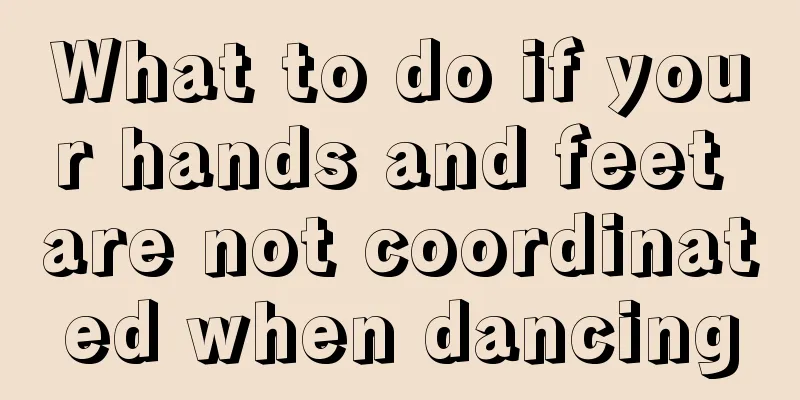What to do if your hands and feet are not coordinated when dancing

|
Some children are born with a good sense of rhythm and can dance very rhythmically. However, some people do not have a good sense of rhythm. Not only can they not dance, but they are also prone to limb incoordination, as if their brain and limbs cannot reach an agreement. Even after many times of practice, the dance movements they produce still do not look good. So not everyone can dance, it also requires talent. 1. What to do if your hands and feet are not coordinated when dancing 1.1. Various physical exercises that involve unfamiliar movements. 1.2. Complete the action in reverse. 1.3. Change the speed and rhythm of your accustomed movements. 1.4. Complete complex actions in a game-like manner. 1.5. It requires creative changes in the way of completing actions. 1.6. Use unfamiliar combinations of movements to make the movements you have already mastered more complex. 1.7. Change the scope of the action space. 1.8. Use various equipment or natural environment to do more complex exercises. 1.9. Use signals or conditioned stimulation at appropriate times to enable athletes to perform various exercises to change their movements. 2. Benefits of dancing 2.1. It can enhance heart function and make the heart beat slowly and powerfully. 2.2. It can enhance the elasticity of blood vessels and reduce the possibility of blood vessel rupture. 2.3. It can enhance muscle strength, strengthen legs, feet, tendons and bones, make joints flexible, and promote blood circulation and metabolism. 2.4. It can enhance the secretory function of the digestive glands, promote regular gastrointestinal motility, increase appetite, and has a good effect on preventing and treating hypertension, diabetes, obesity, habitual constipation and other diseases. 2.5. Often swinging your body to the rhythmic music can make your brain thinking activities clearer and more flexible, which can effectively eliminate mental fatigue and improve learning and work efficiency. According to tests conducted by relevant experts, people who dance three times a week for one hour each time for four consecutive months have sharper reflexes, better vision and memory than those who do not like exercise. 2.6. It is a fitness method that combines movement with stillness and stillness with movement, which can relieve neuromuscular tension. According to experts, when irritability and anxiety come to your heart, walking at a brisk pace for about 15 minutes can relieve tension and stabilize your emotions. |
<<: Can coffee be added with yogurt
>>: How to coordinate hands and feet in swimming
Recommend
Why does my face bones hurt after chemotherapy and radiotherapy for nasopharyngeal carcinoma?
Why does my facial bones hurt after chemotherapy ...
For the problem of hamartoma, choose a regular hospital for treatment
For the problem of hamartoma, choose a regular ho...
Mid-term treatment and conditioning methods for liver tumors
In order to improve the temporary survival rate o...
What to do if intraocular pressure is high after glaucoma surgery
Glaucoma is a relatively common eye disease. Eye ...
How can I refresh myself
Nowadays, whether students or office workers, eve...
Anti-human globulin test positive
There are a large number of cells inside the huma...
How to treat bad breath caused by frequent mouth inflammation
In life, our mouths may get inflamed due to some ...
Low-calorie snacks
Snacks are a favorite of many people. Many people...
There is white sticky substance in the stool
Normally, a healthy person's stool should be ...
Interventional treatment of liver metastasis from breast cancer
Interventional therapy for liver metastasis of br...
Can gallstones be crushed?
Gallstones are a very common disease in daily lif...
Is cleft lip hereditary? Through what inheritance
Cleft lip is a hereditary disease. Due to its spe...
What are the symptoms of kidney failure
As the saying goes, 30% of stomach problems are t...
How to make peach gum delicious and simple
How to make peach gum delicious and simple? Candy...
Does formaldehyde have a smell?
Everyone should be familiar with formaldehyde. Fo...









